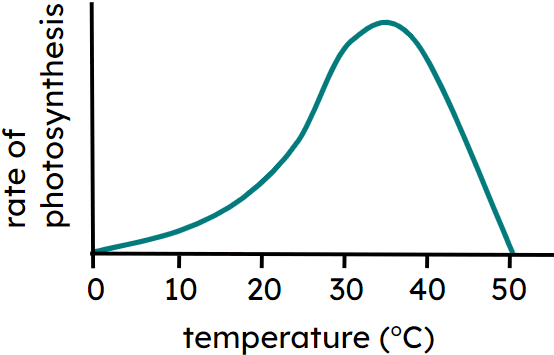Photosynthesis and limiting factors
I can explain the effects of limiting factors on the rate of photosynthesis.
Photosynthesis and limiting factors
I can explain the effects of limiting factors on the rate of photosynthesis.
These resources will be removed by end of Summer Term 2025.
Lesson details
Key learning points
- Rate of photosynthesis increases as CO2 concentration, temperature and light intensity increase from low levels.
- The rate of photosynthesis can be limited by one of these factors even if the others continue to increase.
- The rate of photosynthesis increases until one of more factors becomes limiting, then does not increase further.
- Interpretation and explanation of graphs depicting effect of interacting limiting factors on the rate of photosynthesis.
Keywords
Photosynthesis - The process used by producers to make their own food via a series of chemical reactions.
Rate - A measure of how much change occurs per unit of time.
Limiting factor - A condition that, when in short supply, slows down or limits the rate of photosynthesis.
Enzyme - A biological catalyst that speeds up a chemical reaction without itself being used up.
Optimum - The conditions where maximum rate of reaction occurs.
Common misconception
Failing to realise that the plateau on a rate graph can occur because another factor (not named on the axes) has become limiting.
The lesson explores rate graphs in which multiple limiting factors are affecting the rate of photosynthesis.

Licence
Starter quiz
6 Questions
Exit quiz
6 Questions






